Genre: Adventure Developer: T&E Soft Publisher: Sigma Enterprises Players: 1 Released: 1990
Visual novels have become a bit of an indie darling these days. More and more western developers are now using this sub-genre of the graphical adventures to tell stories that may use visual aids but that are more interested in exploring themes, characters and society in general than, relying more on the strength of their writing rather than flashy graphics. Back in the 1980s and 1990s though, games of this type rarely ever left Japan. There are a few that made their way across the pond that nowadays are considered cult classics – Snatcher on the Sega CD comes to mind – but most visual novels that made it out of Japan either suffered from horrible translation or were just cheap porn games (or, more often than not, both). And since these types of games are almost entirely reliant on the strength of their plot, dialogues and internal monologues, playing the original was impossible unless you were fluent in Japanese.
However, thanks to the Internet and the dedicated efforts of hobbyists and ROM hackers, more and more games that never made their way out of Japan are now finally given a proper localization. Such is the case with today’s game, the Sci-Fi-adventure Moving Adventure Psy-O-Blade, which in early 2015 received a full English version patch thanks to the romhacking efforts of fellow Sega-16-Forum member tryphon and the translation skills of Eien Ni Hen.
So what’s the backstory? In the upcoming future, one that spun off from the major world-political factions of the 1980s, earth governed by three major powers: So so-called “Free Nations” (a spin-off of 1980s NATO), the “Communist Nations” (its Warsaw Pact counterpart) and the “Neo Communist Federation” (basically China). These three blocks are locked in an arms race that has moved beyond nuclear weapons and has now entered the realm of killer satellites. Space exploration has become ever more important in the meantime as well, and in the late twenty-first century, a manned interstellar exploration vessel called the Septimius 2 was launched to explore a new solar system. It is now the year 2101, and the spaceship is returning from its 28-year-mission. Shortly after it re-entered the solar system however, all communications with the Septimius 2 ceased, and the ship started to veer off course. With no way to contact the vessel, the so-called “Ministry of Space” has now sent the Cassowary and its crew of eight to investigate and recover the Septimius 2. When these six men and two women arrive, they find the access to the living quarters sealed and the computer inaccessible.
Why is Raccoon, the ship’s computer, offline? What happened to the crew of the Septimius 2? And what’s behind the mysterious device called the “Sigma Project?” As Keith O’Donnell, the young pilot of the Cassowary, the player tries to uncover the mysteries of the Septimius 2.
The full title of the game is Moving Adventure Psy-O-Blade, and that’s basically what you do: You move Keith from room to room, each represented by one or two – mostly static – screens and explore the five levels and different quarters of the Septimius 2 (and the Cassowary, for a short bit). With the D-Pad, you can point a cursor at your environs. Hitting the A button allows Keith to either examine things or talk to another person. The B button isn’t used most of the time but comes into play (literally) later for a short segment. The C button opens a menu that offers different options depending on the context of the situation. Point at a person, and it might offer you different keywords for dialogue. Otherwise, you can either move to one of the adjourning rooms, if the game allows it. or you can save your progress. It is a control scheme that is a testament of the game’s home computer roots, and one that would have been greatly improved by a mouse instead of a game pad. Since this game was released years before the introduction of the Sega Mouse, however, this option is not on the table.
You may not move around freely though, at least not straight away. Depending on your situation, you will first have to fulfill a certain plot requirement before you are allowed to leave a particular room. This marks one of the biggest flaws of the game: Quite often, you have little clue what needs to be triggered in order to progress. This may be a general flaw that is inherent to the visual novel genre. In Psy-O-Blade though, this is further aggravated by the fact that the game doesn’t highlight which objects can be interacted with in any form or fashion. For example, if I point the cursor at a disassembled gun, do I get a description for the gun as a whole, or only for the individual part I’m currently pointing at? Does pressing the A button on a vent result in a new observation, or will I only get the generic room description again? This results in several situations where the player gets stuck and starts to randomly press the buttons on everything that might look slightly different in the hopes that something may finally trigger a new event to move things along.
Scenes are underscored by a decent soundtrack that changes depending on the situation – quieter tunes for calmer moments, up-tempo beats for high-tension moments. The score is quite versatile and generally fits the mood quite well (although personally I was surprised when one event was accompanied by a tune lifted directly from “L’amour est un oiseau rebelle,” a song from the opera Carmen). Sometimes though a particular track may wear out its welcome, especially if you’ll hear it looping constantly when you´re stuck on a particular scene (see above).
Gameplay, soundtrack or visuals are only secondary in visual novels, though: These types on adventures live on their plot. Whether you will enjoy Psy-O-Blade will rely heavily on whether you’re a science fiction buff or not and also what kind of science fiction fan you are. The theme, look, and feel are heavily inspired by the movie Alien, a fact that’s even lampshaded by one of the crew members at one point. So, if you like dark, hard science fiction, maybe with a smidge of cyperpunk, then the makers of Psy-O-Blade got the right kind of story for you.
The mystery behind the mission of the Septimius 2 and the fate of its crew is intriguing, and the game does a good job of slowly uncovering its secrets layer after layer without playing its hand too quickly. The plot gradually gets darker the more you progress, and for the most part, the game does a good job of getting the proper mood across. While the horror and magnitude of the entire situation slowly creeps in, Psy-O-Blade occasionally tries to balance things out with a spot of humor, which sort of works… sometimes. Other times, a crew member tries to make a joke that doesn’t really sit well with the gravity of the situation, especially at around the halfway point. Other situations should probably be part of a high-tension moment but just come off as a bit silly (like throwing random stuff at an android). The translation’s not to blame for this, though: Eien Ni Hen did a good job transferring even science fiction jargon and some technical stuff from Japanese to English pretty accurately and even managed to bring across the odd sci-fi reference that’s integrated naturally. Other than that, the plot is hard science fiction through and through, and I was impressed how characters from a 1980s game were discussing topics like neural networks, a technology that was certainly already in development back than but hadn’t really entered public consciousness until fairly recently. The game feels a bit like an episode of an anime series that never aired, complete with – I kid you not – its own mid-episode break screen. It’s odd, but it fits in surprisingly well.
Less fluidly integrated, however, is the shooter segment the game suddenly throws you into. Out of nowhere, the player find himself or herself in a small Space Harrier clone where they are tasked to shoot down 200 enemies. This is the only time where all three buttons on the controller are used, as each is mapped to a different button. The reason for this sequence is, to be honest, kind of silly and doesn’t really gel with the otherwise serious plot. It is also quite hard though, at least the first few times you try it. The enemy patterns are fixed however, and if you fail you can always start over without penalty, so you just need to keep on trying over and over until you eventually manage to fulfill the 200-kill-requirement and move on. If that’s supposed to increase tension, it doesn’t really work. In fact, even though there are a few life-or-death situations in the plot, I never really found a way to actually die and fail in this game. I appreciate that the makers of the game tried to inject a bit of variety into their game but effectively, it feels more like pointless busywork to artificially stretch out the game’s playtime.
Speaking of which, the game is really short. Even if you take the shooter sequence into account (as well as all the times where you start hitting buttons randomly because you’re stuck), the plot can easily be resolved after merely four hours, give or take. The ending feels particularly rushed, like there was some part of the plot that got cut out and left some loose threads needed to be tied up in a hurry. That assumption isn’t that far off, I’d reckon. When Psy-O-Blade was released originally on the MSC, PC-88 and PC-98 home computers, it contained an entire second episode with a different main character that told a different story related to the mission of the Septimius 2. I don’t know the particulars of said story but given the game’s sudden end, it seems feasible.
I really appreciate the effort typhon, Eien Ni Hen and their helpers went through to bring this game to an English-speaking audience. Psy-o-Blade is a nice little science fiction adventure, even given its shortcomings as a game. I absolutely understand why the title wasn’t localized back in the day though; it offers no real replay value, only lasts for a mere four hours, and its lack of object highlighting can lead to some really frustrating situations. However, if you are a science fiction fan and find yourself with a spare afternoon and nothing better to do, there are certainly worse ways to spend your time with.
Score: 6 out of 10

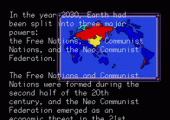
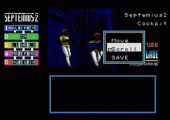
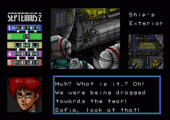
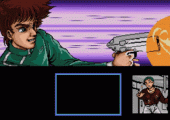
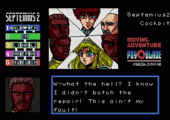
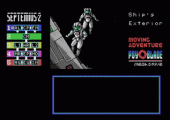
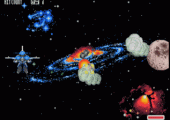
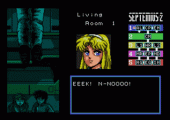
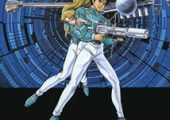
Recent Comments